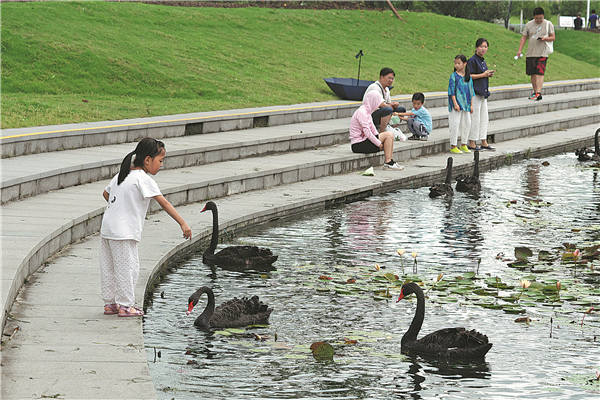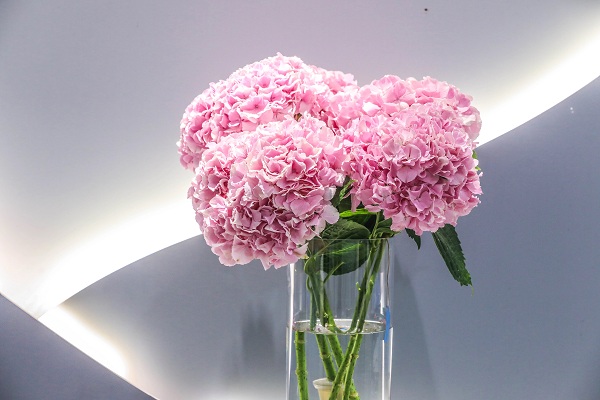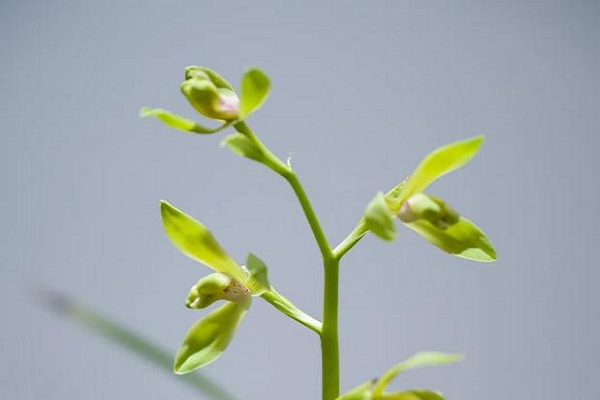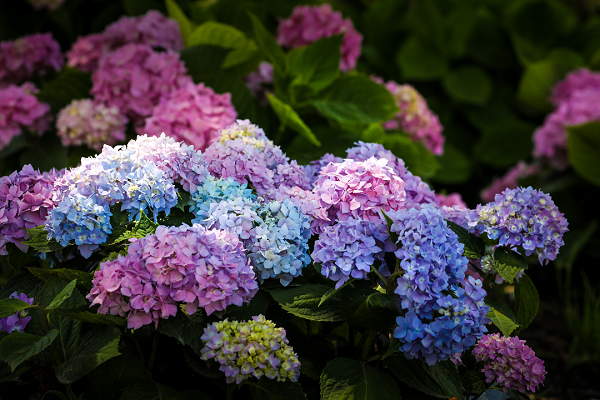
Children play with black swans at a pond in the garden. [Photo by Gao Erqiang/China Daily]
Hands-on grower
Born in a farming family in Yanshi, a city in Luoyang, Henan province, Hu spent much of his growing-up years helping out in the fields. He recalls having to help with the summer wheat harvest even though he was preparing for his college entrance exam.
Given his background and seeing how the government was providing financial support to those who majored in forestry and agricultural studies, Hu chose to study at Northeast Forestry University in 1987. He sought to expand his knowledge further at Beijing Forestry University, where he graduated in 1997 with a doctorate, becoming one of the few botanic majors in China to hold a PhD at that time. He then joined the Shanghai municipal government to help make the city greener.
Over the past 24 years, Hu has helped to select and cultivate the plants seen today in Shanghai's public spaces and been involved in more than 50 national and municipal technological projects. Though he now works at Chenshan Botanical Gardens, Hu still plays an important role in the city's "green matters", among which are environmental conditions for trees.
He says many trees in the city used to be planted on sidewalks and sometimes near underground pipelines. Some trees were even planted above tunnels and underground parking lots, making it difficult for their roots to develop, and this created a potential hazard because such trees would easily topple during storms and pose a threat to the public. There was also the problem of bad soil quality.
In many parts of urban China, the soil is often mixed with stone, glass scraps and concrete blocks and tends to harden as vehicles pass over them. In Shanghai, the situation is especially severe because the soil also contains high amounts of salt and basification due to the high underground water level that is common in the Yangtze River Delta region.
To rectify such issues, Hu and his colleagues at Chensan Botanical Gardens worked together with a technical guidance center of the municipal landscaping administration and Morton Arboretum in the United States in 2018 to set up a joint lab that could design solutions.
The lab eventually developed a tailor-made soil system for Shanghai. The system includes two parts. The first consists of gravel that forms a framework that resists pressure from the ground above and prevents the soil from hardening. The second part revolves around soil filing, comprising organic fertilizer, biochar and soil conditioner that improves the biodiversity of the soil and ensures the healthy development of the root system. The lab also suggested adding a permeable layer of organic material such as shredded barks around trees and installing drainage tubes under the roots to absorb excessive rainwater.
This innovation has proved to be successful. Trees planted based on this system have been found to have branches that grow three times faster. This method of planting trees has since been applied to downtown areas of Shanghai. To commemorate this achievement, gum trees by the southern gate of Chenshan Botanical Gardens were planted in the same manner.
Hu has also been involved in the construction of Expo Culture Park in Shanghai, Xiongan New Area in Hebei province, and botanical gardens in Taiyuan, Shanxi province, and in Suzhou, Jiangsu province.


